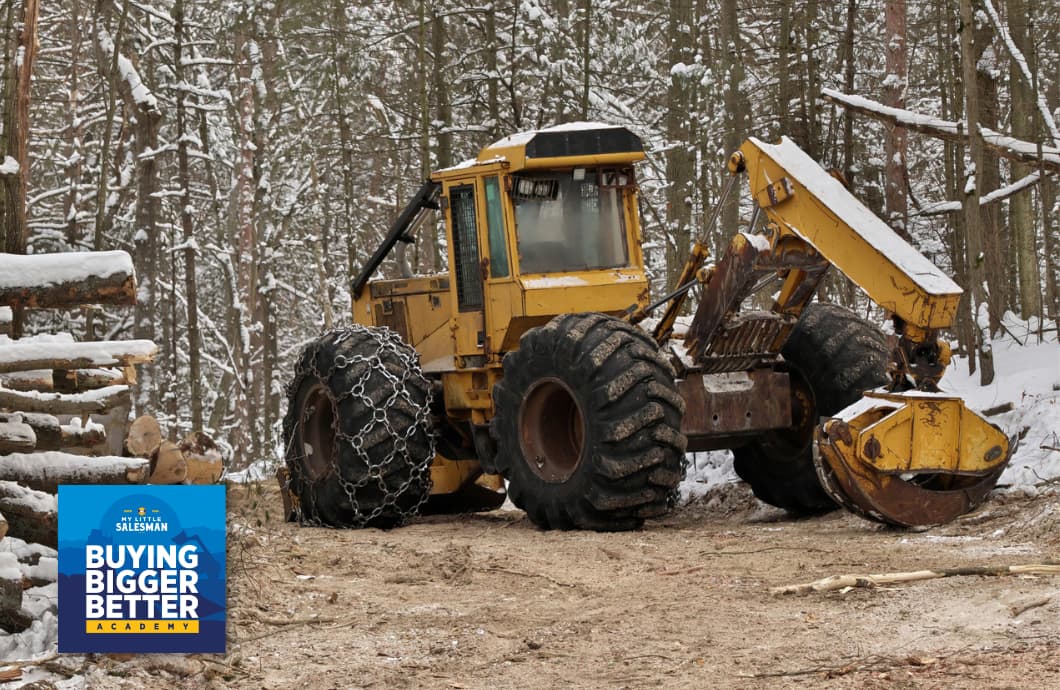
Are you considering buying a new or used logging skidder for sale but don’t quite know what classification, style, or model is best?
In this guide, we’ll provide you with a basic understanding of what to look for in a forestry skidder that will meet your needs and appeal to your budget.
What does your logging skidder need to handle?
Logging skidders, also known as forestry skidders, are the workhorses of the forest—extracting felled trees and hauling them to collection points and processing facilities.
Choosing the right model depends on your unique needs. Because of this, it pays to consider the size and terrain of your logging operation, the types of trees you harvest, and, of course, your budget. Taking these into account will ensure you wind up with the right size skidder suited to meet your needs.
Let's meet the two main types of skidders and their strengths.
Grapple Skidders
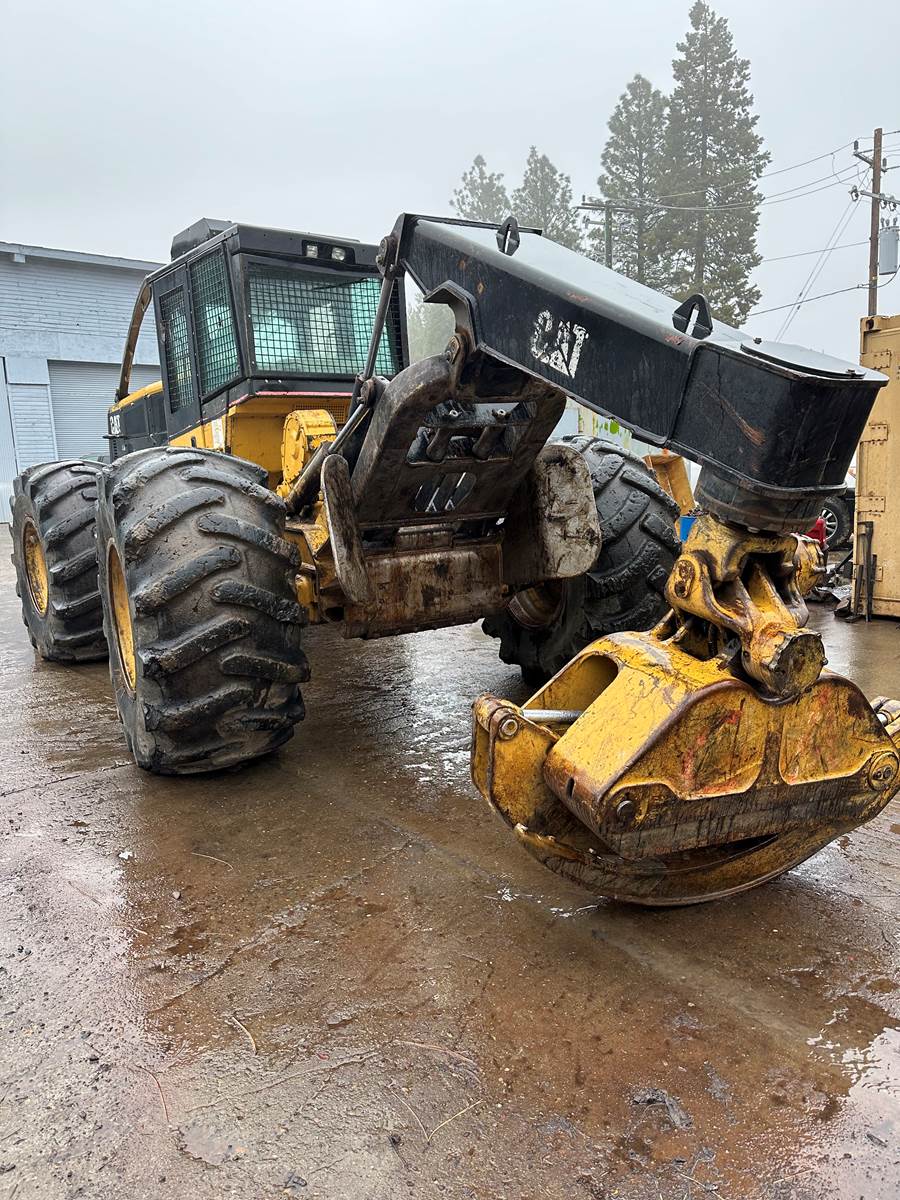
Grapple skidders are the Swiss Army knives of forestry machines—using a hydraulic arm and grapple to grab and lift multiple logs at once. They are ideal for uneven terrain and selective logging.
“How much do grapple skidders tend to cost?”
However, with increased agility and versatility comes a higher price tag—with used entry-level grapple skidders starting at $40,000-$175,000 depending on size and condition. Newer, larger grapple skidders can cost anywhere from $200,000 or $300,000.
Cable Skidders
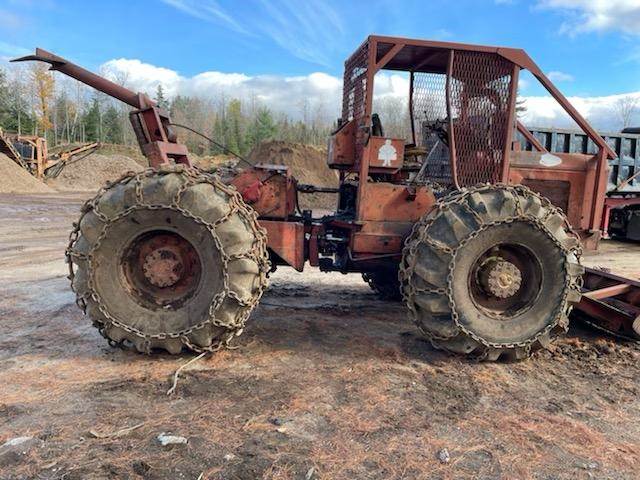
The classic "dragsters" of the woods—cable logging skidders use a winch and cable system to drag logs behind them, making them a cost-effective option for flat terrain and clear-cutting operations that require the pulling of tree stumps.
“How much do cable skidders tend to cost?”
Looking for affordability? Used cable skidders for sale can be found for as low as $15,000-$50,000, while newer high-end cable skidders can cost over $200,000 at times. While this isn’t cheap, they tend to be less expensive than their grapple logging skidder siblings.
Beyond these options, you'll encounter even more versatile choices:
Dual-Function Skidders
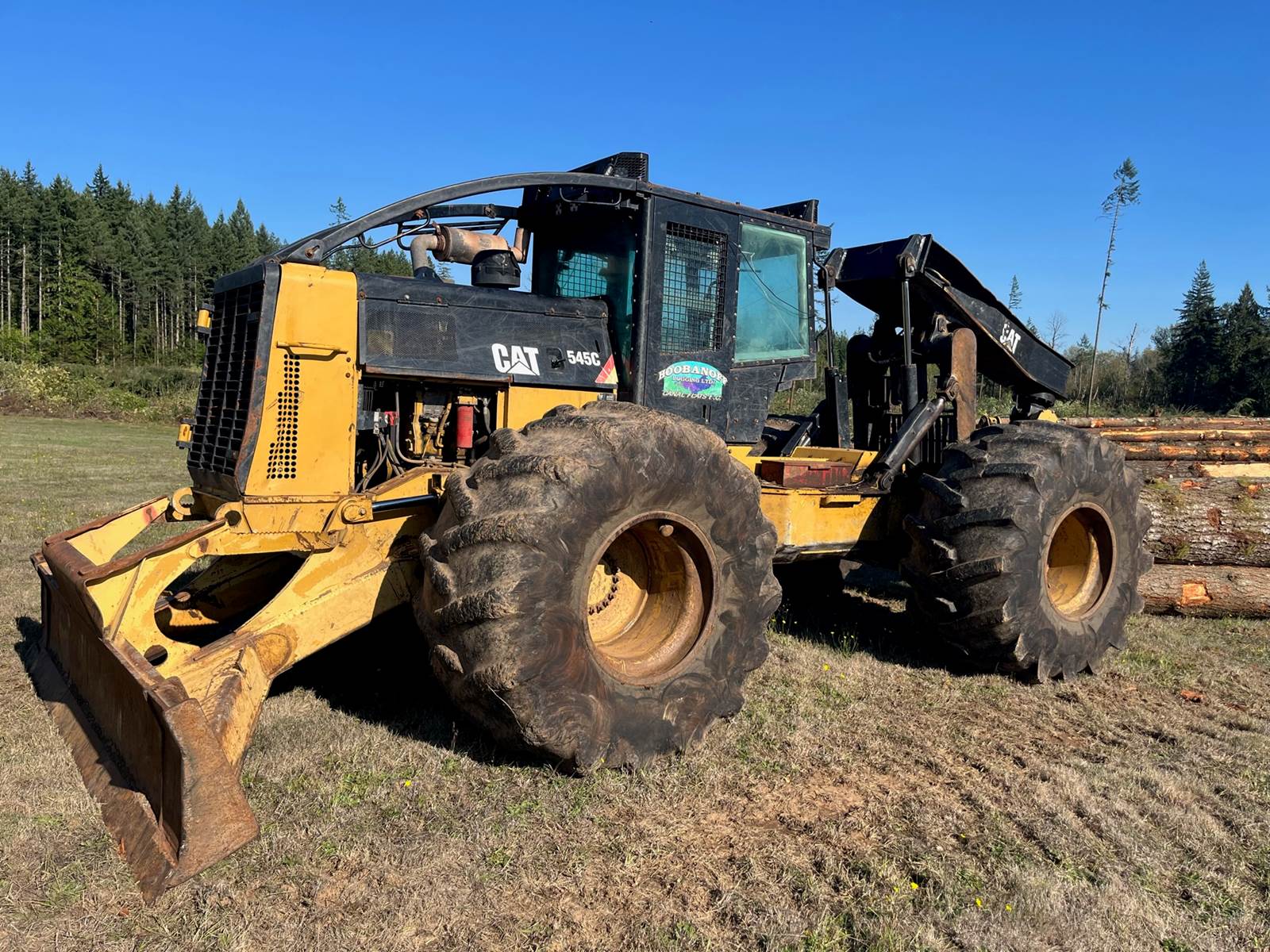
Combining the flexibility of a grapple with the raw power of a cable system, dual-function logging skidders offer the best of both worlds among forestry equipment. Dual-function skidders can take on various difficult tasks that would ordinarily require several different types of equipment.
“How much do dual-function skidders tend to cost?”
For that increased functionality, however, be prepared for a premium price tag of $200,000 to $400,000 for new dual-function logging skidders.
But just how are these skidders making their way through the forest?
To answer this question, we need to compare logging skidders that move using wheels and tires versus those using tracks.
Wheels or Tracks for Logging Skidders
So, what does your working terrain look like—steep and wet or flat and dry? The difference between these may help you decide whether a wheeled or tracked logging skidder is the best choice for your operation. Getting the right piece of forestry equipment for the job can make all of the difference when the work begins.
Wheel Skidders
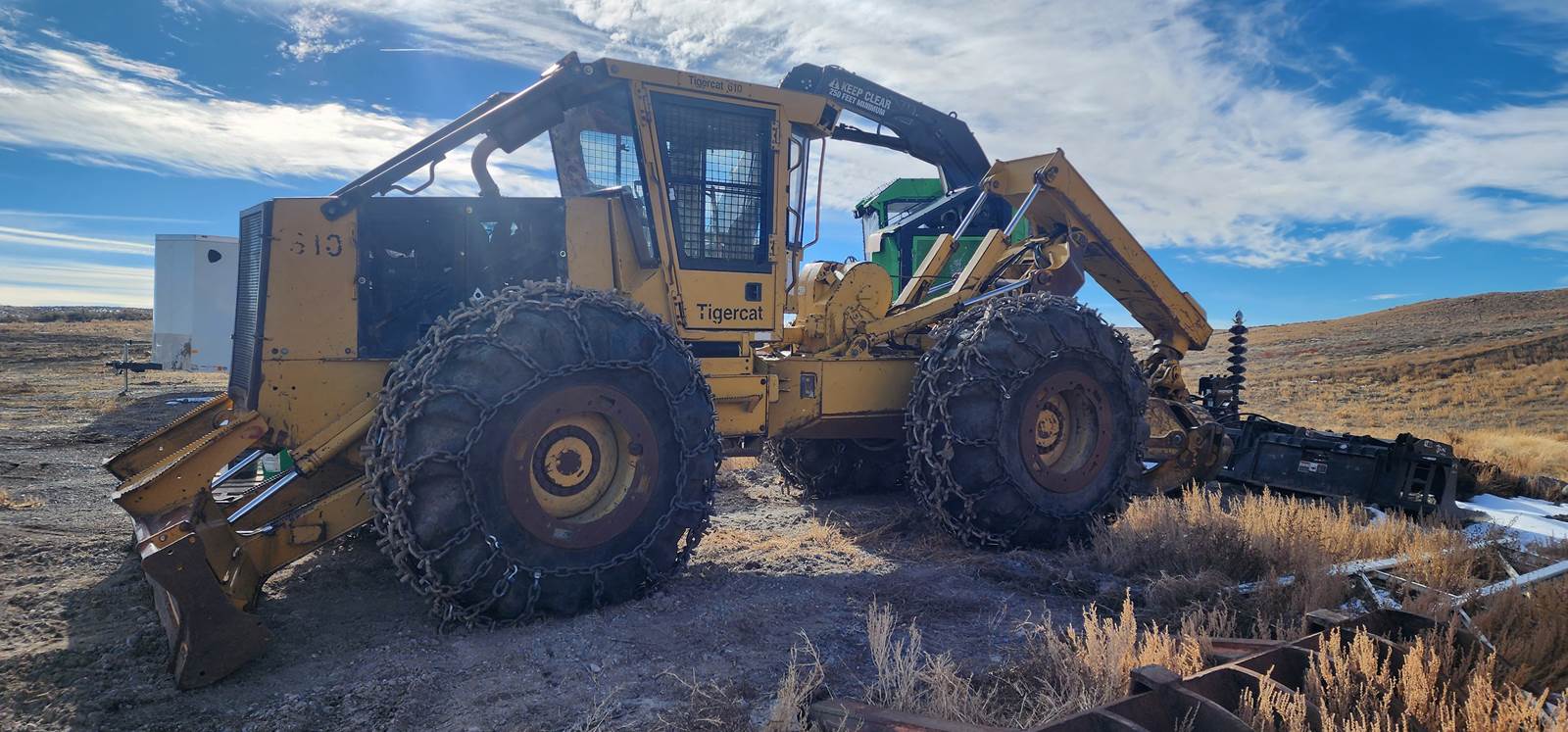
Ideal for flat terrain and fast travel, wheel logging skidders provide good maneuverability at a similar price point to cable skidders.
Used wheeled logging skidders can range from $14,000 for “well-loved” models to $200,000—depending on age, size, condition, and other features. Nailing down pricing on new wheeled logging skidders can be tricky due to unlisted prices, but can range from $80,000 for smaller models to well over $300,000.
Track Skidders
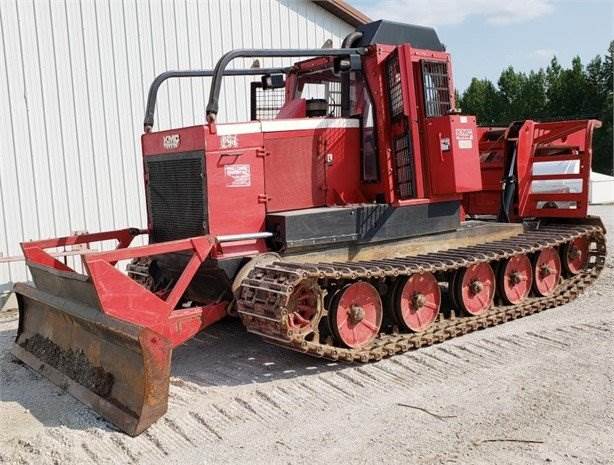
Track skidders can usually conquer any rugged terrain challenge with superior traction and stability—perfect for rough terrain and heavy loads, even on steeper or wetter conditions.
While this is so, be prepared to pay more, as they tend to have a price tag of $150,000 for a used track logging skidder with a higher powered new track wheel skidder for sale coming near to a $500,000 price tag.
Logging Skidder Sizes Explored
Skidders are typically categorized by weight class, starting from lightweight models in the 3-4 ton range and climbing up to heavyweights exceeding 10 tons. This weight directly correlates to their hauling capacity—with larger machines tackling bigger logs and steeper slopes.
Understanding Designations
- 500, 580: Numbers like these often refer to the skidder's operating weight in hundreds of pounds (e.g., 500 = 50,000 pounds).
- D-Series, G-Series: Some manufacturers use letter series to differentiate generations or model upgrades within a weight class.
Choosing the Right Size
Matching size to your operation is crucial. You’ll want to consider some of the following.
- Timber size and volume: Large trees require hefty muscles while smaller operations might thrive with a nimble lightweight machine.
- Terrain: Steep slopes, soft ground, and otherwise difficult terrain demand extra traction, often found in heavier classes.
- Budget: Skidders are significant investments, so choose a size that balances capability with affordability.
- Maneuverability: Tight spaces or winding trails might restrict your options to smaller, more agile models.
Remember, size isn't everything. Always consider features like engine power, winch capacity, and grapple size alongside weight class to find the perfect fit for your logging rhythm.
Key Safety Features to Look for in Logging Skidders
To ensure your logging skidder will be both safe for operators as well in compliance with safety requirements, it pays to look for forestry skidder models with the following safety features.
- Rollover and Falling Object Protection: Ensure the skidder has a robust Rollover Protection Structure (ROPS) and Falling Object Protective Structure (FOPS) for operator safety during rollovers and from falling debris.
- Fire Suppression Systems: In fire-prone areas, choose skidders equipped with automatic fire suppression systems for added safety.
- Ergonomic Seating and Seat Belts: Comfortable, ergonomic seating with secure seat belts are essential for operator safety and comfort during long working hours.
- Visibility and Lighting: Good visibility from the cab and adequate lighting are vital for safe operation, especially in low-light conditions.
- Emergency Shutdown Systems: A readily accessible emergency shutdown system is crucial for quickly stopping the machine in emergencies.
- Noise and Vibration Dampening: Look for skidders with features to control excessive noise and vibration, protecting long-term operator health.
Technological Advancements in Logging Skidders
Forestry equipment models have come in a long as in terms of technological tools to ensure the logging job goes smoothly. For a safer and more efficient skidder operation, you may consider looking for forestry skidders with the following tools.
- GPS and Mapping Technology: Choose skidders with GPS for efficient route planning and terrain navigation, aiding in environmental conservation and operational efficiency.
- Telematics for Performance Monitoring: Opt for skidders with telematics systems to monitor machine performance, enabling predictive maintenance and reducing downtime.
- Advanced Control Systems: Skidders with advanced operator assistance technologies, like automatic transmission and improved hydraulics, reduce operator fatigue and enhance efficiency.
- Eco-Friendly Options: Consider electric or hybrid skidders for reduced emissions and energy recovery systems to capture and reuse energy, increasing efficiency and reducing environmental impact.
Popular Logging Skidder Brands Explored
Choosing the right logging skidder is like picking the perfect axe—it's a personal choice heavily influenced by the terrain you conquer. Here's a peek into the most popular skidder brands in the logging industry, their strengths, weaknesses, and some operator reviews.
John Deere: The Green Giant of the Woods
John Deere logging skidders are immensely popular in the forestry industry—boasting of legendary reliability, a parts haven, and abundant dealer support. Operators report smooth handling and comfy cabs but occasionally bemoan the hefty price tag and potential repair complexity.
Tigercat: The Tech Titan
Tigercat logging skidders roar with cutting-edge tech, muscle-flexing engines, and builds that endure. Users report continued performance even in brutal conditions but aren’t exactly thrilled about demanding maintenance and sparse dealer networks.
Timberjack: The Dependable Tortoise in the Race
Timberjack forestry skidders strike a balance between affordability, dependability, and user-friendliness. Operators appreciate their familiar controls and readily available parts—even if they’re less than thrilled about their slower speeds and fewer bells and whistles than younger brands.
Cat (Caterpillar): The Powerhouse
Cat forestry skidders roar with robust construction, dependable engines, and favorable resale value. Operators boast about how they are immensely powerful machines—which is almost enough to make them forgive the models’ fuel thirst and less refined driving experience.
Malwa: The Rising Star
Malwa forestry skidders gain traction with innovative designs, surprisingly efficient engines, and budget-friendly prices. Early adopters have good things to say about their comfortable cabs, user-friendly controls, and unexpectedly strong performance. But, because they’re a newer brand starting in the mid-2010s, dealer support may require just a bit more effort.
Remember, the perfect skidder is as unique as the timber you harvest.
Weigh factors like performance, reliability, maintenance, and budget before diving into the purchase pool. Test drive your options, listen to the whispers of seasoned users, and choose the titan that matches your logging terrain and dreams.
Now that you know the players, let's review the critical considerations before making your purchase.
Size Matters
Choose a skidder with the right capacity for your typical log size and volume. Remember, bigger isn't always better—a nimble machine might be ideal for tight spaces.
Price vs. Value
New skidders come with a hefty price tag, sure, but offer warranties and peace of mind. Used skidders can be budget-friendly but you’ll want to factor in potential repair costs and hidden issues. As some say—if you’re not paying a note, you’re paying a shop.
Parts Availability
Ensure you have easy access to replacement parts for your chosen model. Downtime waiting for repairs can cripple your operation.
Skidder Reputation
Research the manufacturer's reputation for quality and reliability. A trusted brand might be worth the extra investment.
The Importance of Professional Inspection
Before buying any logging skidder for sale, it is worth the money to have it professionally inspected by a mechanic experienced in repairing logging equipment. Due to their experience, they will be able to either (a) spot crucial factors and deal breakers to keep you from buying a lemon, (b) let you know what repairs the model will need soon to help you in price negotiations, or (c) be able to give a model you’re considering a thumbs up to help your peace of mind.
If you’re looking to buy a skidder further away and have it shipped, research logging mechanics near that seller to call and get quotes on objective mechanical inspections. This will likely bode better results than a seller’s inspection of their equipment.
Professional inspections will likely cost a few hundred dollars but are money well spent.
Buying a skidder is an investment.
Do your research, compare options, and don't be afraid to seek expert advice. By following these tips, you'll be well on your way to finding the perfect machine to conquer the timber jungle and turn those towering trees into profitable lumber.
Ready to explore your skidder options and find your perfect match?
If you’re ready to begin your search, head over to My Little Salesman—the online marketplace for heavy equipment and commercial trucking. With a vast selection of new and used skidders for sale, helpful resources, and expert guidance, My Little Salesman is your one-stop shop for conquering the road to logging success!